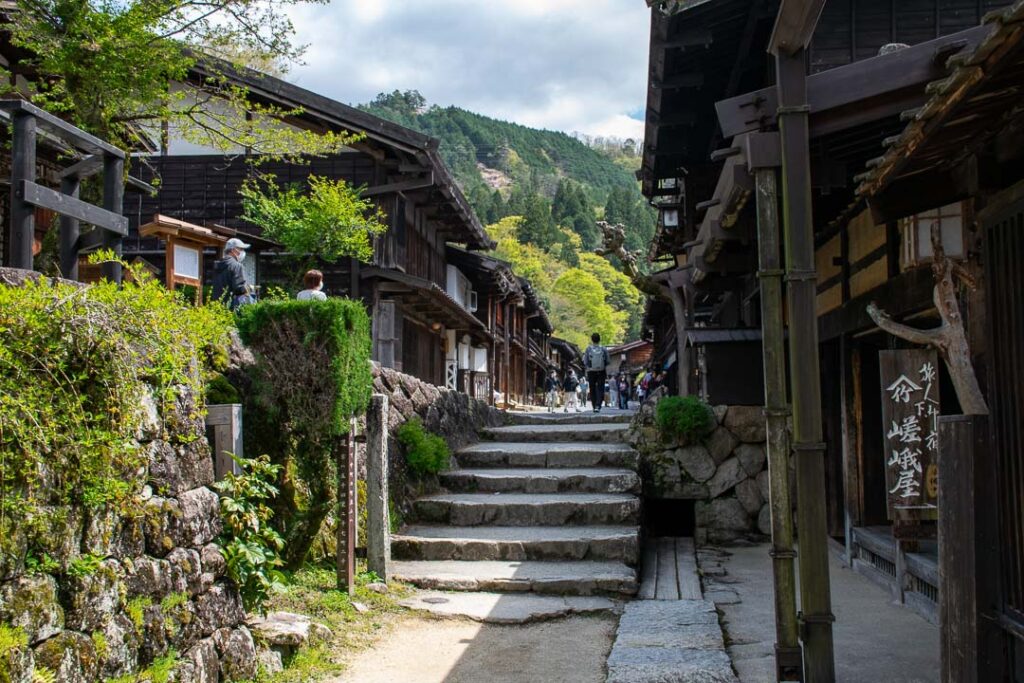The Nakasendō, an ancient road connecting Kyoto to Edo (now Tokyo), has been traveled for centuries. Artists Keisai Eisen and Utagawa Hiroshige once captured its beauty in woodblock prints, depicting the lively towns and scenic landscapes of Japan’s Edo Period. While modernization has changed much of the route, parts of the Nakasendō remain intact, offering a glimpse into history.
A walk through the Kiso Valley, one of the most well-preserved sections, is like stepping into the past. Starting in Nakatsugawa, we explored bamboo forests and traditional inns like Nagataki. Despite modern roads, stone lanterns still line the way, reminding us of the travelers who walked here long ago.
At Guest House Motomiya, we met Keiko, who welcomed us with freshly harvested bamboo shoots. In Magome, her son Daisuke served us coffee at Hillbilly Coffee Co. The town was bustling, much like in Hiroshige’s prints. As we climbed further, we passed cherry blossoms and old bear bells—a reminder of the wild nature around us.
Tsumago, a beautifully preserved Edo-era town, had no vending machines or modern signs. We enjoyed traditional snacks like oyaki (buckwheat buns) and goheimochi (grilled rice skewers), reminiscent of those seen in historic prints. At our guesthouse, Urara Tsutaya, a small earthquake shook the dining room, but a relaxing soak in the onsen made for a perfect ending to the day.
On our final day, we reached Ontake Yohaijo, a shrine dedicated to Mount Ontake. Standing there, we understood why pilgrims once worshipped from afar. Descending into Narai, we saw a giant red comb—just like in Eisen’s print of the town. Throughout our journey, echoes of the past met us at every turn, proving that history still lingers along the Nakasendō.
#JapanTravel #KisoValley #NakasendoTrail #HistoricJapan #WalkJapan #Magome #Tsumago
